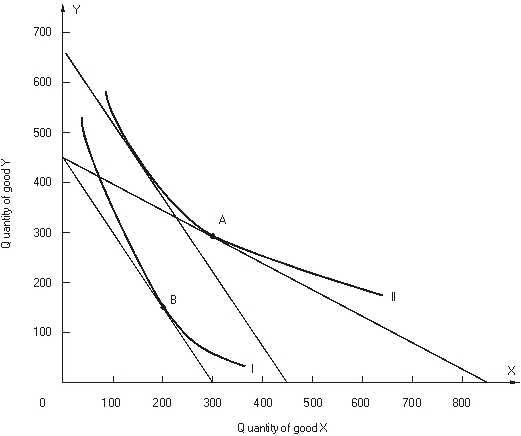Short Answer
The following figure shows a portion of a consumer's indifference map and budget lines. The price of good Y is $17 and the consumer's income is $7,650.
 Let the consumer begin in utility-maximizing equilibrium at point A on indifference curve II. Next the price of good X changes so that the consumer moves to a new utility-maximizing equilibrium at point B on indifference curve I.
Let the consumer begin in utility-maximizing equilibrium at point A on indifference curve II. Next the price of good X changes so that the consumer moves to a new utility-maximizing equilibrium at point B on indifference curve I.
-Two points on this consumer's demand for good X are PX= $_________ and X = _________; and PX = $_________ and X = _________.
Correct Answer:

Verified
$9; 300; $...View Answer
Unlock this answer now
Get Access to more Verified Answers free of charge
Correct Answer:
Verified
View Answer
Unlock this answer now
Get Access to more Verified Answers free of charge
Q26: refer to the following figure:<br> <img
Q27: Use the following graph showing a consumer's
Q28: refer to the following figure:<br> <img
Q29: refer to the following figure that shows
Q30: refer to the following figure:<br> <img src="https://d2lvgg3v3hfg70.cloudfront.net/TB10434/.jpg"
Q32: refer to the following figure:<br> <img src="https://d2lvgg3v3hfg70.cloudfront.net/TB10434/.jpg"
Q33: The marginal rate of substitution of X
Q34: If a demand curve slopes upward, then<br>A)
Q35: refer to the following graphs:<br> <br> <img
Q36: Use the following graph showing a consumer's